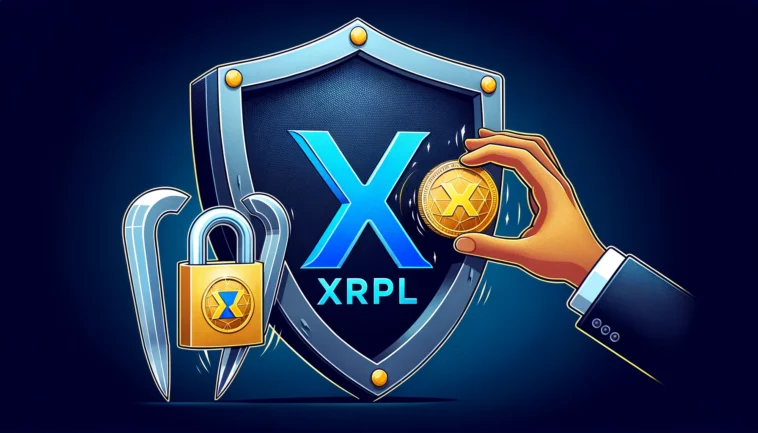The XRPL (XRP Ledger) is constantly evolving, and one of its recent updates introduces a significant feature known as “Clawback.” This feature, presented as part of the rippled 1.12.0 release, is now open for voting by the XRPL community. In this article, we will delve into what the Clawback feature entails, why it matters, and its implications for users, especially in the context of institutional adoption and compliance.
Understanding the Clawback Feature:
The Clawback feature is designed to address specific scenarios involving issued tokens on the XRPL. It enables token issuers to “claw back” these tokens under predefined circumstances. It's essential to clarify that this feature applies to issued tokens, not XRP itself. The introduction of Clawback serves several key purposes:
- Network Safety: It provides a mechanism to mitigate malicious activities, fraud, or other potential threats within the XRPL ecosystem.
- Compliance: Institutions and organizations adopting the XRPL require regulatory compliance. Clawback offers a tool to enforce compliance measures when needed.
Why Clawback May Not Be a Concern for Average Users:
It's important to note that the Clawback feature is primarily aimed at institutional use cases. Average users who engage in routine transactions may find this feature largely irrelevant to their XRPL interactions. Furthermore, users have the flexibility to choose which assets they engage with, based on their preferences and risk tolerance. If the Clawback feature is a concern, users can opt for assets without it enabled.
Core XRPL Concepts: Trust Lines & Rippling:
Before diving further into Clawback, it's essential to understand two fundamental concepts within the XRPL ecosystem: trust lines and rippling.
- Trust Lines: Trust lines represent the relationship between an XRPL user and a token issuer. They are bidirectional relationships connecting users' accounts with token issuers. Trust lines are crucial for handling issued currencies or IOUs within the XRPL.
- Rippling: Ripplings occur when more than one trust line is involved in a transaction. This happens when addresses are linked via trust lines that share the same currency. Ripplings are a way to settle interconnected debts, ensuring the balance between trust lines remains accurate.
Freezing: An Essential Safeguard:
Freezing is another feature within the XRPL designed to address various potential issues. It involves locking specific assets under certain circumstances. There are three types of freezing:
- Individual Freeze: The counterparty can only return frozen funds to the issuer. This can be used, for example, to address money laundering or fraudulent activities.
- Global Freeze: Only a token issuer can enact this, freezing all relevant counterparties. It might be used in cases where the issuer's secret key is compromised.
- No Freeze: This setting permanently removes the ability to freeze individual counterparties but does not disable the ability to enact a global freeze.
These freezing mechanisms serve as safeguards against malicious intent, lost account access, and unforeseen issues.
How Clawback Complements Freezing:
The Clawback feature works in synergy with freezing mechanisms to enhance network security and compliance. It can be used to reclaim assets from a Ripple trust line under specific circumstances, such as lost account access or malicious activity. While similar to freezing, Clawback offers additional flexibility and control over asset management.
Analysis and Conclusion:
While some may express concerns about features like Clawback potentially limiting transaction freedom, it's essential to recognize that the XRPL is increasingly attracting institutional interest and adoption. With institutions and even countries building on the XRPL, compliance with legal frameworks and safety measures becomes imperative. Features like Clawback align with these requirements and are similar to precautions in place on other blockchain networks.
Users can easily identify assets with the Clawback feature enabled and choose whether or not to engage with them. Issuers are unlikely to misuse these features, as it could tarnish their reputation and lead to legal repercussions.
In summary, the Clawback feature contributes to the XRPL's growth as an institutional-grade blockchain. It ensures safety, compliance, and reliability, making it an essential tool for institutional use cases. It's worth noting that Clawback only applies to issued assets, not XRP itself.
Next Steps for Clawback:
The Clawback feature is currently open for voting and requires more than 80% approval from validators to be implemented. Resources and documentation are available for those interested in exploring this feature further.
As the XRPL ecosystem continues to evolve, developers and enthusiasts have exciting opportunities to contribute to its growth. If you're interested in building on the XRPL or have questions about the process, consider scheduling a call to explore the possibilities.
Additional Resources:
Stay informed and engaged in the XRPL community to be part of its exciting journey ahead.


